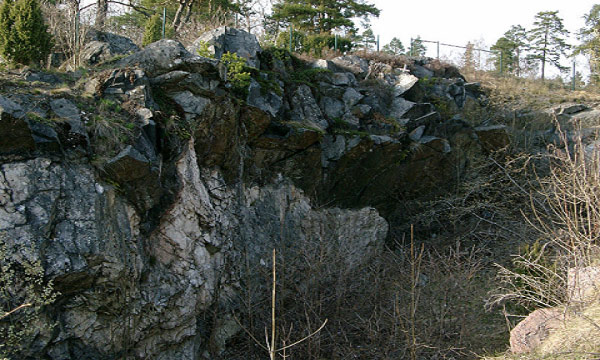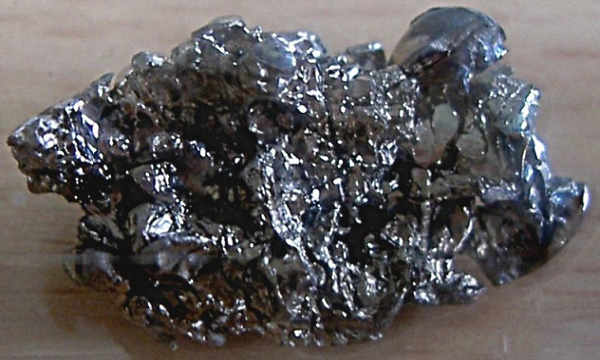Interesting stories revolve around chemical elements
Chemistry is a rather dry subject, but revolving around finding elements in the periodic table has many strange stories.
How are chemical elements found?
Detecting many elements in an ore mine
Ytecbi, ytri, tebi, eribi, gadoleni, honmi, luteti, scandi, tantan, tuli are all chemical elements discovered from a quartz stone ore in Ytterby, Sweden . This ore mine is formed by the operation of the last ice age and was initially opened to feldspar extraction, a mineral that plays a major role in the creation of ceramics.

Bari is dubbed the witch stone
Barium is a common chemical element used to create paper bleaches, lightening agents and a dye to block X-rays and make digestive problems easier to see on scanner. In the Middle Ages , barium was widely known for another reason. Smooth stones, concentrated in Bologna, Italy, are very familiar to witches and alchemists because of their glowing characteristics in the dark after exposure to a light source for a short time.

The coincidence of finding helium
In the year Pierre Jules Cesar Janssen observed eclipse phenomena in India and found a kind of yellow light that no one had discovered before. Pierre erected a solar spectrophotometer to observe the sun's emission during the day. Joseph Norman Lockyer, an English astronomer at half-way around the world at the same time carried out similar work. Both recorded their findings and sent them to the French Academy of Sciences on the same day. After the discovery was recognized, they simultaneously became the discoverer of the helium element.

The element is a big controversy about names
Many chemical elements have names and symbols that do not match, mainly because the symbol is taken from the Latin transliteration. The only exception is tungsten , denoted by "W." The cause of the difference is because this element is associated with two names for a long time. English-speaking countries call it "tungsten " while other countries call " tungsten " because tungsten was first separated from tungstenamite ore and this old name remained until 2005. However, the symbol of tungsten on the periodic table is still "W."

Neon lights existed before the discovery of neon elements
Neon is a rare gas and one of the 6 elements is inert, colorless, odorless and almost non-reactive. In 1898, two chemists Morris Travers and William Ramsay experimented on the evaporation of liquefied petroleum gas and discovered neon along with rare gases argon and krypton . However, neon bulbs were born in the 1850s when Johann Heinrich Wilhelm Geissler used vacuum tubes, vacuum pumps and methods to mount electrodes inside the lens to create light bulbs.

Aluminum is more precious than gold
Before 1880, scientists had only found a way to separate tiny pieces of aluminum, so aluminum was very expensive.Napoleon III, the first president of the French republic, only presented aluminum dining utensils when entertaining the most noble guests. Ordinary guests will be invited to use a silver or gold knife. The King of Denmark wore an aluminum crown and the ladies of Paris (France) often wore jewelry and used aluminum binoculars to show their wealth.

Deadly accidents before finding fluorine
In an effort to find fluorine, scientists have encountered many fatal accidents. Chemist Humphry Davy has permanent damage to his eyes and fingers. Two Irish chemists, Thomas and George Knox, tried to separate fluorine from the specimen, one who unfortunately died while the other was bedridden for years. Flo is also the cause of death for two other scientists from Belgium and France. Only when Ferdinand Frederic Henri Moissann devised a way to lower the specimen's temperature to -23 degrees Celsius, did he succeed when it separated fluorine as a volatile liquid. Moissan herself was forced to stop the study 4 times because of fluoride poisoning.

- Japan found the 113th chemical element
- Where do chemical elements come from?
- Chemical elements do not follow quantum mechanics theory
- There is a chemical element applied for decades that turned out to never exist
- 150th anniversary of the periodic table of chemical elements
- Dubna reaffirmed the latest element 117
- The search for new elements will become very difficult from now on
- The giant 'inventors' at Berkley
- Japanese scientists honored to name element 113
- The Russians have created a rare element
- The periodic table has four new elements, the 7th cycle has been filled
- A new periodic table is coming soon
 The most famous scientific failures in history
The most famous scientific failures in history Mysterious genius mechanic and the machine froze time
Mysterious genius mechanic and the machine froze time The son carries the 'bad gene' of genius Albert Einstein
The son carries the 'bad gene' of genius Albert Einstein Isaac Newton
Isaac Newton 'Inexplicable entity' from 13 billion years ago appears
'Inexplicable entity' from 13 billion years ago appears  How rare are rare earths really?
How rare are rare earths really?  Where does the gold in the Solar System come from? Where is the most gold in the Solar System?
Where does the gold in the Solar System come from? Where is the most gold in the Solar System?  Reduce soil toxicity by adding minerals to irrigation water
Reduce soil toxicity by adding minerals to irrigation water  How are all matter in the universe created?
How are all matter in the universe created?  New discovery: Collisions of neutron stars produce heavy elements of strontium
New discovery: Collisions of neutron stars produce heavy elements of strontium 